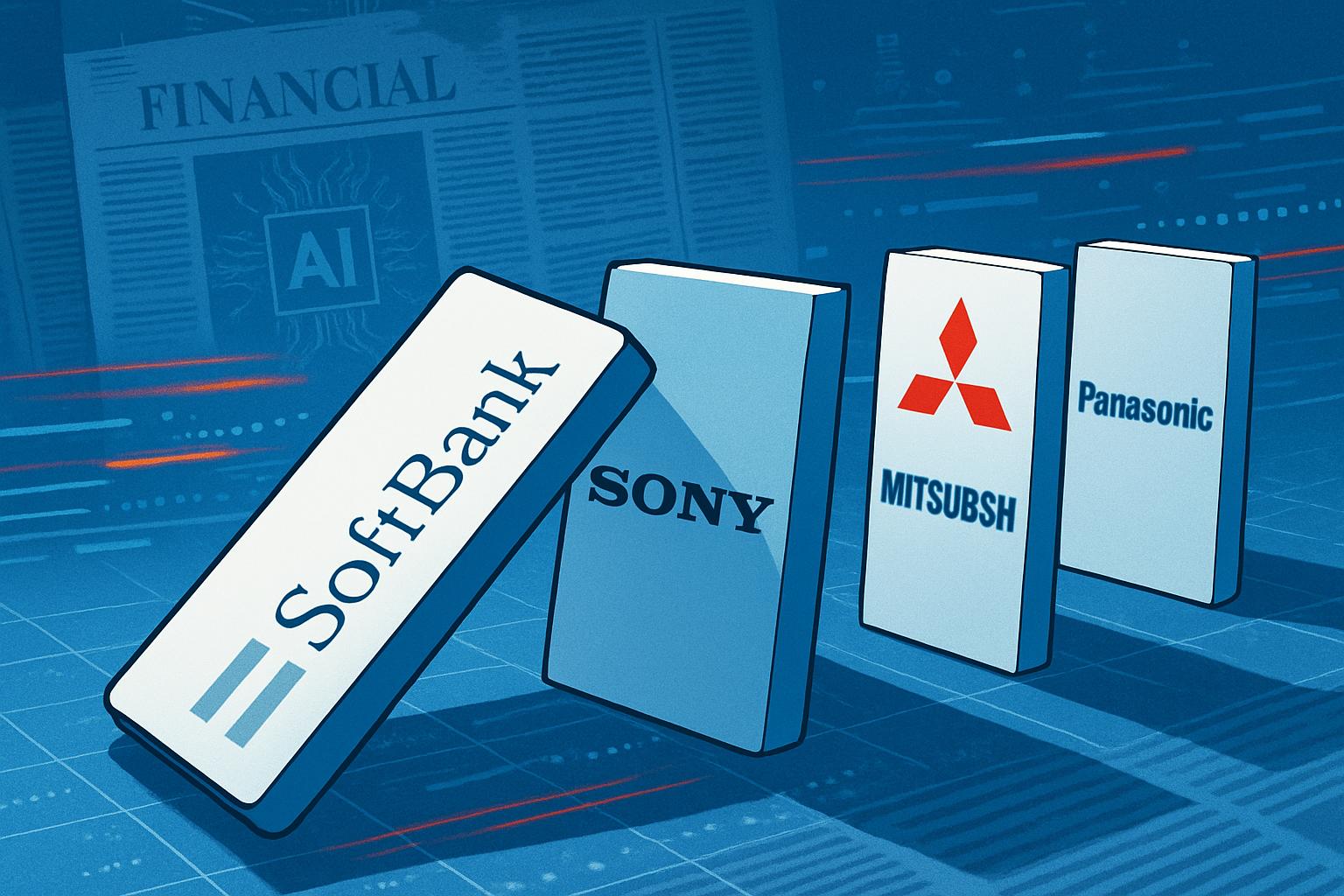
AI CERTS
7 hours ago
SoftBank’s $50B Slide Highlights Japanese conglomerate exposure
This introduction reviews the core facts, outlines the stakes, and sets up a deeper dive into drivers, contagion, and strategy. Japanese conglomerate exposure will remain central to that discussion.
Market Shock Overview 2025
Early November delivered the steepest weekly fall in SoftBank shares since 2022. However, the Tokyo-listed giant faced a broader AI correction rather than firm-specific scandal. Coverage from CoinCentral cited a 6.9% one-day slide and a near-20% weekly drop. Consequently, roughly $40-$50 billion evaporated from SoftBank’s capitalization. The decline underscored how Japanese conglomerate exposure intertwines with global chip optimism. Furthermore, secondary effects surfaced across semiconductor names, feeding fears of tech sector contagion.

Key numbers illustrate the scale:
- SoftBank NAV: ¥31 trillion as of June 2025
- Arm market cap: about $140 billion in mid-November
- Nvidia stake sale: $5.8 billion realized proceeds
These figures frame the magnitude of balance-sheet swings. Nevertheless, the headline losses were paper-based, not cash outflows. Therefore, understanding valuation mechanics proves essential before judging solvency. These opening facts establish baseline context. Meanwhile, the next section isolates immediate loss drivers.
SoftBank Weekly Loss Drivers
SoftBank relies heavily on Arm equity, private OpenAI stakes, and other AI hardware bets. Additionally, leverage concerns resurfaced once prices turned south. Market watchers noted how modest percentage moves in Arm induced outsized shifts in parent valuation. In contrast, SoftBank’s decision to exit Nvidia reduced liquid hedges that once cushioned volatility.
Three intertwined forces dominated the week:
- Profit-taking after rapid AI rallies
- Rotation toward energy and defensive sectors
- Algorithmic selling that tracks momentum
Moreover, Vision Fund pressure compounded sentiment because prior write-downs remain fresh in memory. Consequently, Japanese conglomerate exposure became shorthand for concentrated AI risk. The section highlights core catalysts. However, Arm’s structure amplifies each catalyst, as discussed next.
Arm Volatility Amplifies Risk
Arm’s free float remains low, leaving trading dominated by a narrow shareholder base. Therefore, small order imbalances can move the price sharply. Meanwhile, revenue guidance for fiscal Q2 showed 34% growth, pleasing long-term bulls. Nevertheless, valuation ratios already baked in aggressive future royalties. Any disappointment fuels tech sector contagion as peer multiples compress.
SoftBank owns roughly 90% of Arm, exposing group equity to every tick. Consequently, Japanese conglomerate exposure acts as a leveraged certificate on Arm sentiment. Furthermore, analysts flagged AI bubble impact spreading when Arm pulled back 8% during the same week. The amplification effect deepened leverage concerns for SoftBank creditors. These dynamics make Arm the volatility throttle. Subsequently, attention shifts to private valuations.
OpenAI Valuation Proxy Issues
Reuters Breakingviews calculated that SoftBank’s share price implied a $750 billion OpenAI valuation. However, the figure rests on indirect math, not transparent transactions. Moreover, illiquid private stakes hinder price discovery. Investors therefore use SoftBank as a public proxy, even though the holding company carries debt layers and conglomerate discounts.
Vision Fund pressure intensifies whenever OpenAI headlines hit. Additionally, AI bubble impact spreading means any governance drama immediately reflects in SoftBank quotes. Consequently, Japanese conglomerate exposure to private AI valuations can distort broader market signals. Nevertheless, executives argue long-term upside outweighs interim noise. The next driver tests that optimism: liquidity management.
Liquidity Moves Raise Alarms
SoftBank sold $5.8 billion of Nvidia stock to fund larger AI commitments. In contrast to Arm, Nvidia offers deep liquidity and daily price transparency. Consequently, retail investors interpreted the trade as swapping certainty for uncertainty. Furthermore, rating agencies monitor leverage concerns because debt-to-NAV climbed during 2024-2025 buybacks.
Cash flexibility remains adequate according to company filings. Nevertheless, short sellers point at margin loan covenants tied to SoftBank stock levels. Therefore, Vision Fund pressure could oblige asset sales if prices keep falling. Professionals can enhance their expertise with the AI Executive™ certification to evaluate such complex capital structures.
Liquidity choices feed perception cycles. Consequently, Japanese conglomerate exposure becomes either stabilizer or accelerator depending on management timing. These issues bleed into wider markets, which the following section explores.
Contagion Across Tech Sector
Market breadth data showed semiconductor ETFs down 7% during the same week. Additionally, hedge-fund de-risking extended to cloud-software names, illustrating tech sector contagion. Moreover, AI bubble impact spreading hit European chip design firms and Taiwanese foundries. Meanwhile, SoftBank’s slump served as headline shorthand for sector nerves.
Cross-asset signals reinforced caution:
- Credit-default-swap spreads for SoftBank widened 30 basis points
- Ten-year JGB yields ticked up as investors priced higher risk premia
- Japanese yen strengthened modestly against the dollar, reflecting safe-haven flows
Nevertheless, some strategists framed the selloff as healthy froth removal. Consequently, Japanese conglomerate exposure remains a bellwether for future rotations. The final section outlines actionable insights.
Investor Playbook Summary Points
Diversification remains the primary defense against concentrated AI bets. Moreover, periodic rebalancing limits leverage concerns that escalate quietly. In contrast, outright shorting of SoftBank carries borrow-fee challenges and event risk. Therefore, structured options or pair trades against AI indices may suit sophisticated desks.
Long-term investors should track three metrics:
- Arm free-float expansion pace
- OpenAI secondary-market prints
- Net debt-to-NAV trends
Monitoring those figures indicates whether Vision Fund pressure eases or grows. Consequently, Japanese conglomerate exposure can transition from liability to advantage if transparency improves.
These strategic considerations close the analytical loop. However, decisions ultimately depend on risk tolerance and forward AI conviction.
Section Takeaway: Contagion will persist without clearer private-market pricing. Nevertheless, disciplined monitoring offers a path through volatility.



